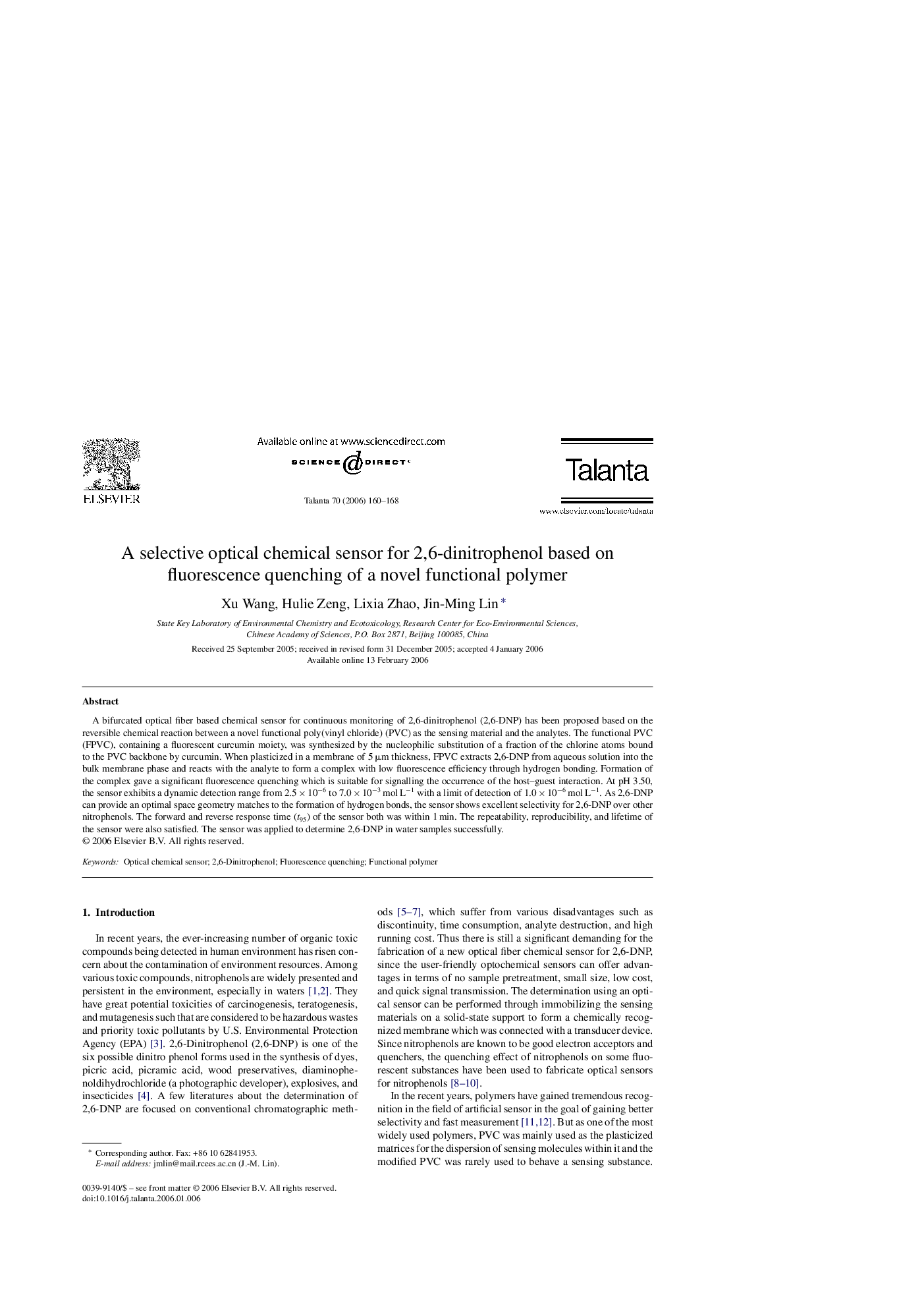| Article ID | Journal | Published Year | Pages | File Type |
|---|---|---|---|---|
| 1244474 | Talanta | 2006 | 9 Pages |
A bifurcated optical fiber based chemical sensor for continuous monitoring of 2,6-dinitrophenol (2,6-DNP) has been proposed based on the reversible chemical reaction between a novel functional poly(vinyl chloride) (PVC) as the sensing material and the analytes. The functional PVC (FPVC), containing a fluorescent curcumin moiety, was synthesized by the nucleophilic substitution of a fraction of the chlorine atoms bound to the PVC backbone by curcumin. When plasticized in a membrane of 5 μm thickness, FPVC extracts 2,6-DNP from aqueous solution into the bulk membrane phase and reacts with the analyte to form a complex with low fluorescence efficiency through hydrogen bonding. Formation of the complex gave a significant fluorescence quenching which is suitable for signalling the occurrence of the host–guest interaction. At pH 3.50, the sensor exhibits a dynamic detection range from 2.5 × 10−6 to 7.0 × 10−3 mol L−1 with a limit of detection of 1.0 × 10−6 mol L−1. As 2,6-DNP can provide an optimal space geometry matches to the formation of hydrogen bonds, the sensor shows excellent selectivity for 2,6-DNP over other nitrophenols. The forward and reverse response time (t95) of the sensor both was within 1 min. The repeatability, reproducibility, and lifetime of the sensor were also satisfied. The sensor was applied to determine 2,6-DNP in water samples successfully.
